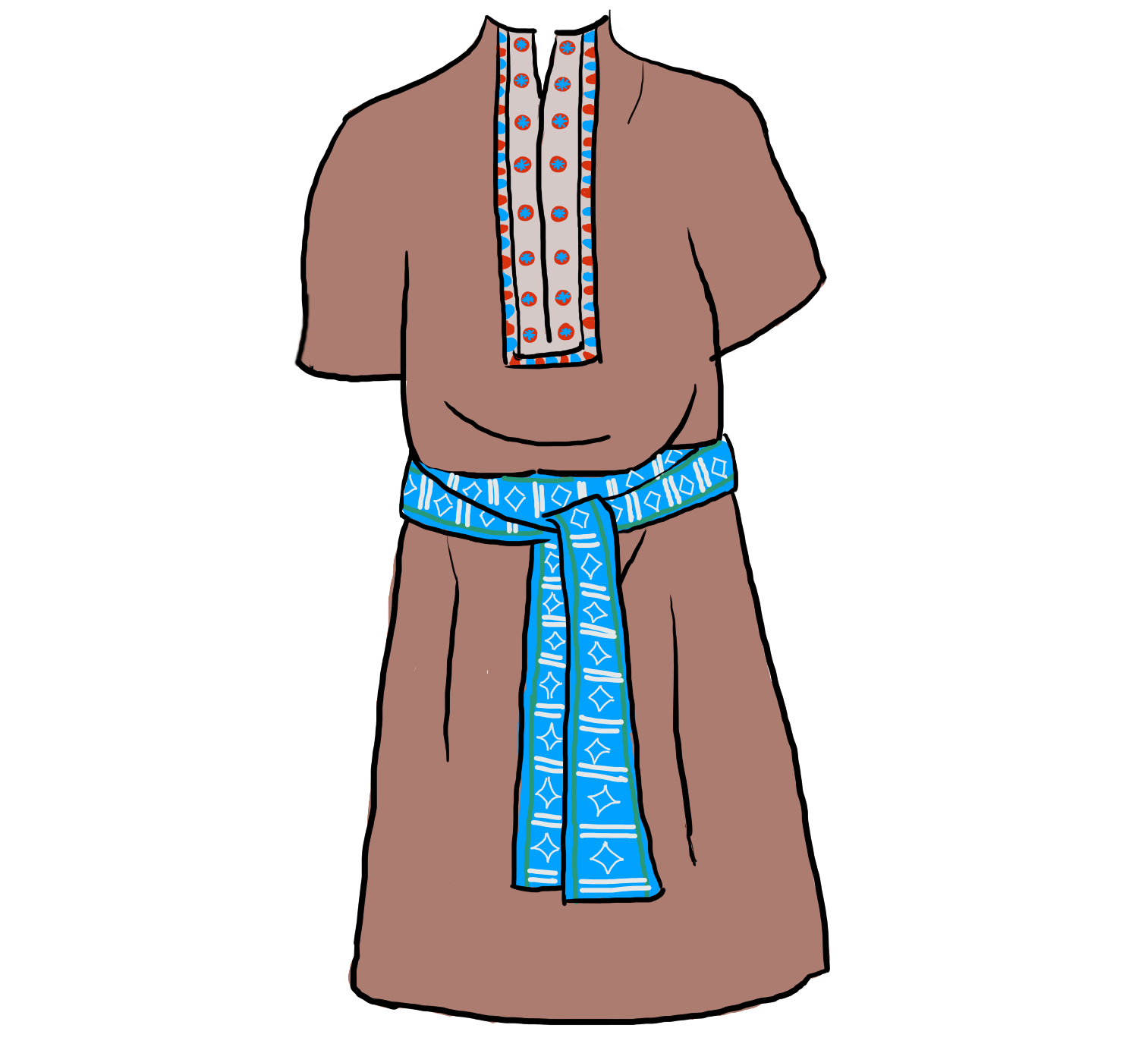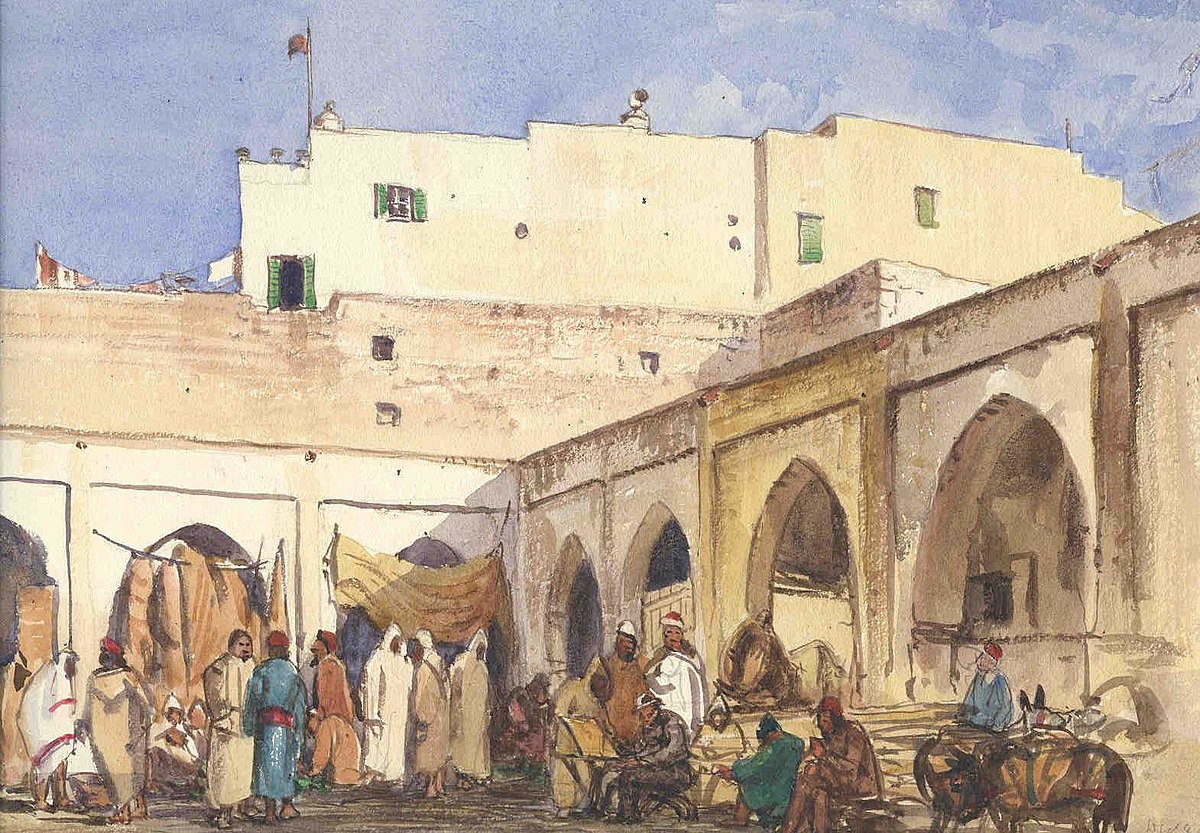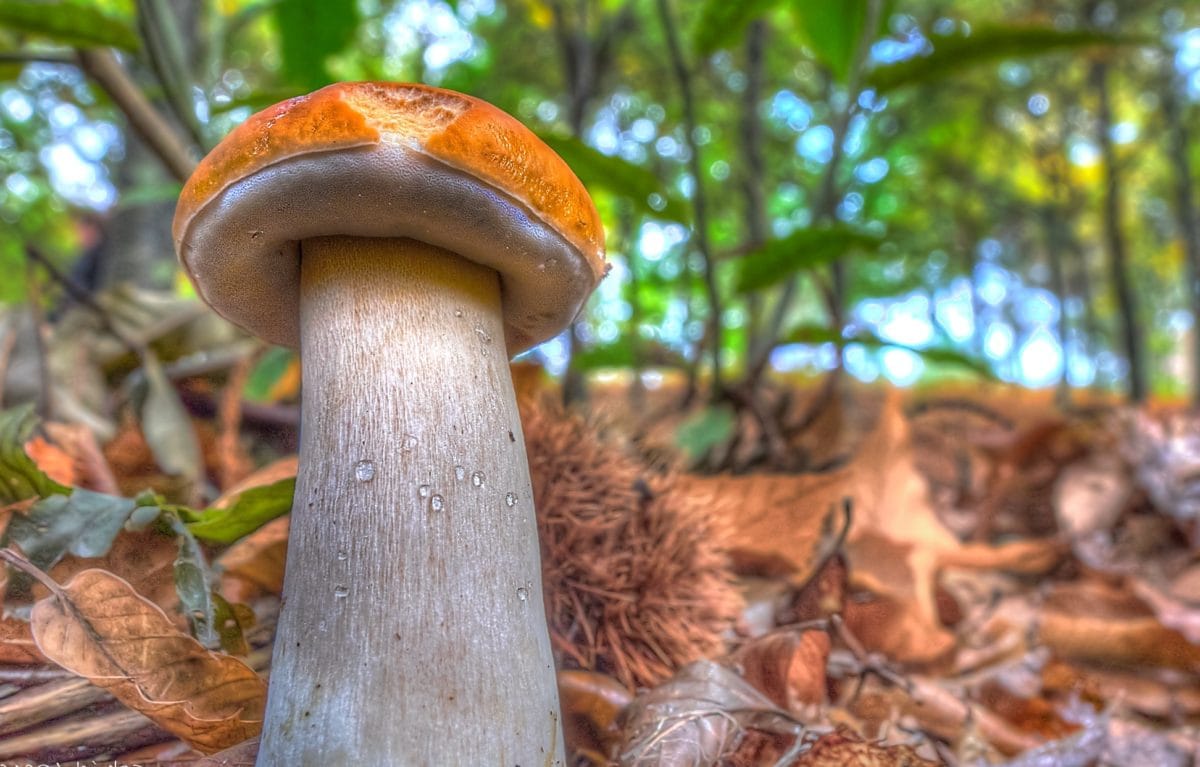Faren culture
Welcome to the Faren Culture Portal!
You can visit the Faren ethnicity article , or continue to explore the culture topics here!Go back to the Culture Portal!
Overview
Farens are the most populous people of the Continent They believe that personal freedom and democracy will lead to the greatest scientific advancements. They were the first to invent writing, to preserve the knowledge of their venerated ancestors.Material culture
Clothing traditions
Main article: Faren clothingRelated articles:
Social class in Faren clothing
Traditional Faren belts
Faren colour associations
The most common Faren piece of clothing is a tunic. Short and long tunics are worn according to the weather, and higher class and women usually wear longer tunics. A skirt or a coat can also be worn over the tunic. Pants are usually avoided. The most common clothing materials are goat wool and linen. Zeribian Sea Silk is highly valued.
Farens enjoy bright colours when possible. Blue is worn for formal occasions, and teachers and counsil members wear yellow. Simple single-colour tunics are decorated with traditional woven belts. The type of the belt and it's patterns transmit information about the wearer's status and background.
Architecture
Famous buildings:Tower of Sunset
Wealthy Farens live in large one or two storied houses, that have rooms circuling a central yard from all sides. The houses have small personal rooms, and a common space used for dining and receiving visitors. Many houses have access to running water, that connects to a fountain on the yard.
The common peoples' houses are similar in shape, but are at least three stories high, and every family only has a small apartment. The yard is shared, and can be used for cooking and washing. The apartment buildings usually share one toilet.
Cuisine
The typical Faren diet consists mainly of grain, legumes and vegetables. Only the rich eat meat daily, preferring wild game, while the common people usually eat goat meat or fish. The typical beverage is either wine or beer depending on the area.
Due to the broad trade networks, the rich Farens have access to a wide variety of luxury food items grown both on the continent and the islands. Most important imported foods are spices, nuts and fruit.
Due to the broad trade networks, the rich Farens have access to a wide variety of luxury food items grown both on the continent and the islands. Most important imported foods are spices, nuts and fruit.
Farens love mushrooms that grow plentifully in the Lowland woods. Zeribians are horified by this custom, because they usually only use the tropical mushrooms on the Eastern Islands for poisons.
Religion & Myths
Traditions
Rites of Passage
Weddings
Main article: Development of wedding traditionsFunerals
Main article: Faren funerary traditions
Afterlife on the West Island
Farens usually cremate their dead. Relatives are buried near the home, under a small altar. The spirits of the dead ancestors, táldaran, continue to dwell around the grave, and are worshiped by the relatives.
The most terrible fate that a Faren can imagine, is dying by drowning in the sea. That would mean an eternal existense alone, in the bottom of the ocean.
Afterlife on the West Island
Farens usually cremate their dead. Relatives are buried near the home, under a small altar. The spirits of the dead ancestors, táldaran, continue to dwell around the grave, and are worshiped by the relatives.
The most terrible fate that a Faren can imagine, is dying by drowning in the sea. That would mean an eternal existense alone, in the bottom of the ocean.
Misc culture articles
Faren colour associationsDevelopment of wedding traditions
Faren funerary traditions








Comments